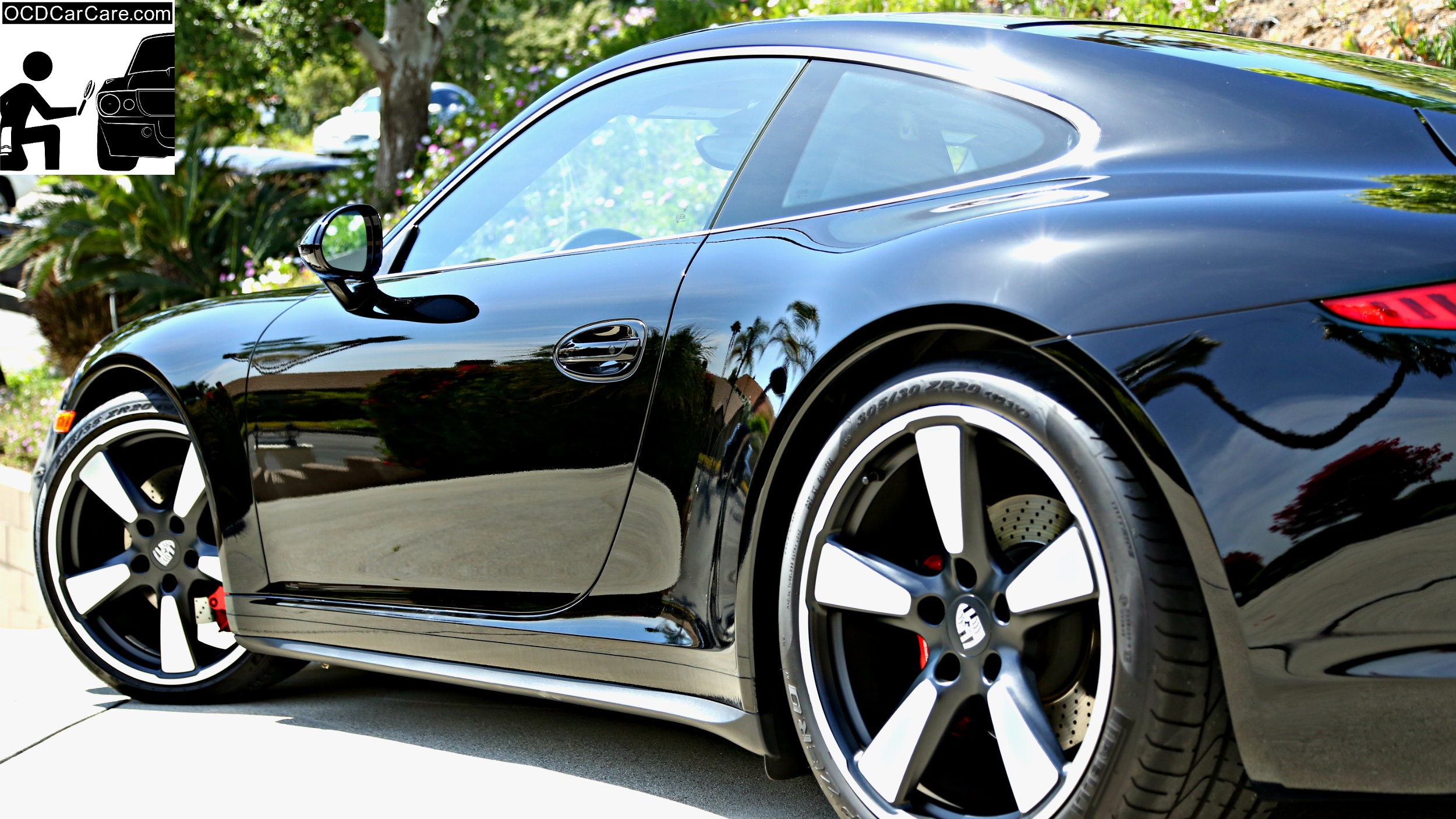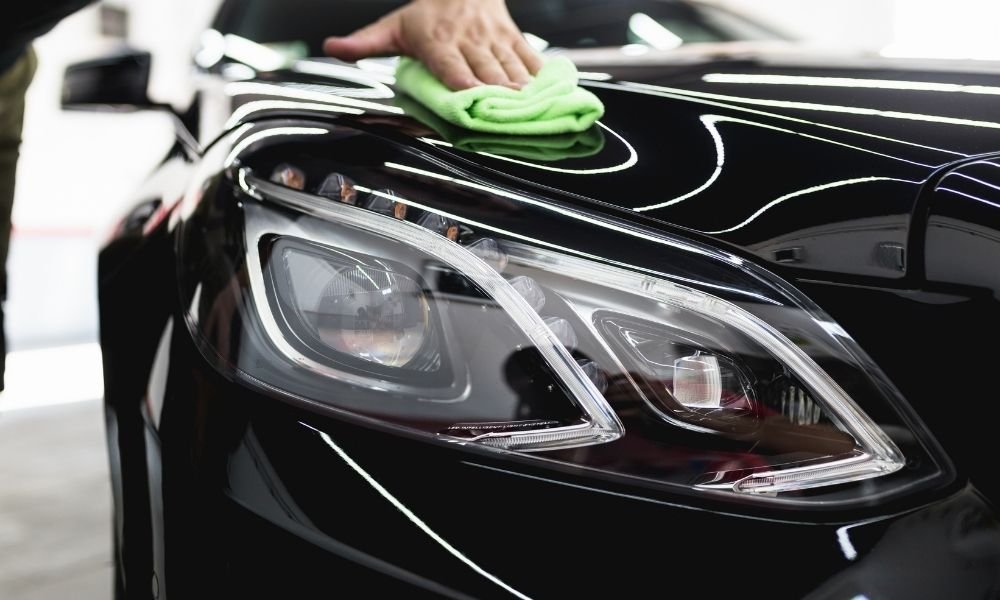Introducing the Science Behind Ceramic Coatings: Exactly How Does It Job and Why Is It Above Traditional Options?
Ceramic coatings have actually been gaining appeal in numerous markets for their remarkable performance and longevity. Understanding just how ceramic coverings work and why they surpass conventional choices is important for those looking for to improve the durability and resilience of their products.
The Chemistry of Ceramic Coatings
In comprehending ceramic finishings, delving into the intricate chemistry behind their make-up is important for comprehending their performance and toughness. Ceramic finishings are primarily composed of silicon dioxide (SiO2), which develops a strong and safety layer when used to various surfaces. This chemical structure supplies outstanding resistance to heat, chemicals, and rust, making ceramic coatings extremely searched for for a variety of applications.
The chemistry behind ceramic coverings includes the development of covalent bonds in between silicon and oxygen atoms, creating a rigid network that boosts the layer's durability and durability. Additionally, the existence of other aspects such as light weight aluminum, zirconium, and titanium more enhances the coating's buildings, offering raised hardness and bond to surface areas.
Recognizing the chemical composition of ceramic finishes permits for the customization of formulations to match certain demands, whether it be for vehicle, commercial, or residential objectives. By harnessing the power of chemistry, ceramic layers remain to lead the way for superior defense and efficiency in different markets.
Benefits of Ceramic Coatings

An additional substantial advantage of ceramic finishes is their hydrophobic nature. This residential property creates water to bead up and roll off the layered surface, lugging dirt and contaminants with it. Consequently, ceramic layers make cleaning and maintaining surfaces a lot easier and much less taxing. Additionally, ceramic coatings supply improved tint and gloss deepness, offering surfaces a dynamic and shiny look. On the whole, the multitude of benefits used by ceramic coverings make them a premium option compared to typical coating techniques.
Exactly How Ceramic Coatings Bond
Ceramic layers bond to surface areas via a process that entails molecular attachment and chemical communications. When a ceramic coating is put on a surface area, it forms a strong bond by chemically adhering to the surface at a molecular level. This bond is developed through the formation of covalent bonds, which are resilient and very strong. The ceramic finish's particles permeate the pores of the surface area, producing a tight hold that withstands separation.
In addition, the chemical communications between the ceramic finishing and the surface area additionally enhance the bond. ceramic coatings san jose. These interactions allow the ceramic covering to create a continual and smooth layer externally, supplying outstanding defense and longevity. Unlike standard layers that may remain on the surface area without fully my response bonding, ceramic coatings create a long-term bond that is immune to chemicals, UV rays, and rough environmental problems

Fundamentally, the bonding device of ceramic layers makes certain a durable and efficient protective layer that surpasses standard finishing choices. This superior bond adds to the durability, scratch resistance, and longevity of ceramic finishings, making them a favored option for different applications.
Durability of Ceramic Coatings
The remarkable longevity of ceramic finishes stems from their durable molecular adhesion and chemical communications with surface areas, guaranteeing a durable protective layer that goes beyond typical layer alternatives. When used, ceramic coatings develop a solid bond with the substrate, producing a resilient barrier versus numerous environmental stressors such as UV radiation, chemicals, and abrasions. This bond is so safe and secure that it can hold up against the roughness of day-to-day use without wearing away or deteriorating promptly.
Unlike conventional finishes that might break down over time, ceramic finishes maintain their honesty for an extended duration, supplying lasting protection for the underlying surface. The strong molecular structure of ceramic coatings resists chipping, fading, and peeling, guaranteeing that the surface stays shielded and visually pleasing for several years to find. This sturdiness not only minimizes the need for constant reapplications but also saves money and time in the future. Overall, the exceptional longevity of ceramic coatings makes them a superior choice for shielding a wide array of surface areas in different applications.
Ceramic Coatings Vs. Traditional Choices
In contrast to traditional covering methods, ceramic coverings offer a distinct blend of durability and protective capabilities that establish them apart in various surface area defense applications. Typical options such as wax or sealants offer a short-lived layer of defense that can diminish promptly, calling for constant reapplication. On the various other hand, ceramic finishes form a strong bond with the surface, developing a permanent or semi-permanent obstacle that is very immune to abrasion, chemicals, UV rays, and severe temperatures.
In addition, ceramic layers supply premium hydrophobic homes compared to traditional coatings. The hydrophobic nature of ceramic finishes creates water to bead up and roll off the surface area, carrying dust and impurities with it. This self-cleaning impact helps to keep the surface area's cleanliness and gloss for extended durations, lowering the need for constant maintenance.
Additionally, ceramic layers have a thicker layer contrasted to standard options, giving improved scratch resistance and defense versus minor influences. This sturdiness ensures durable performance and aids preserve the visual allure of the dealt with surface for an extensive period.
Verdict
In final thought, the scientific research behind ceramic finishings depends on their chemical composition and bonding homes, making them above conventional options. The benefits of ceramic coverings consist of increased longevity and protection for surface areas. By understanding exactly how ceramic layers work and their benefits over traditional choices, one can make this post enlightened decisions when taking into consideration covering choices for different applications.
Unlike conventional coverings that might sit on the surface without totally bonding, ceramic coatings create a permanent bond that is immune to chemicals, UV rays, and rough ecological problems.
The extraordinary long life of ceramic finishings stems from their robust molecular attachment and chemical interactions with surfaces, ensuring a resilient click this site protective layer that surpasses traditional finishing choices.Unlike conventional finishings that may deteriorate over time, ceramic finishings keep their stability for a prolonged duration, supplying lasting defense for the underlying surface area.In contrast to standard covering approaches, ceramic coverings supply an unique blend of durability and safety abilities that establish them apart in numerous surface area protection applications. By comprehending exactly how ceramic finishings work and their advantages over traditional options, one can make informed choices when taking into consideration coating choices for different applications.